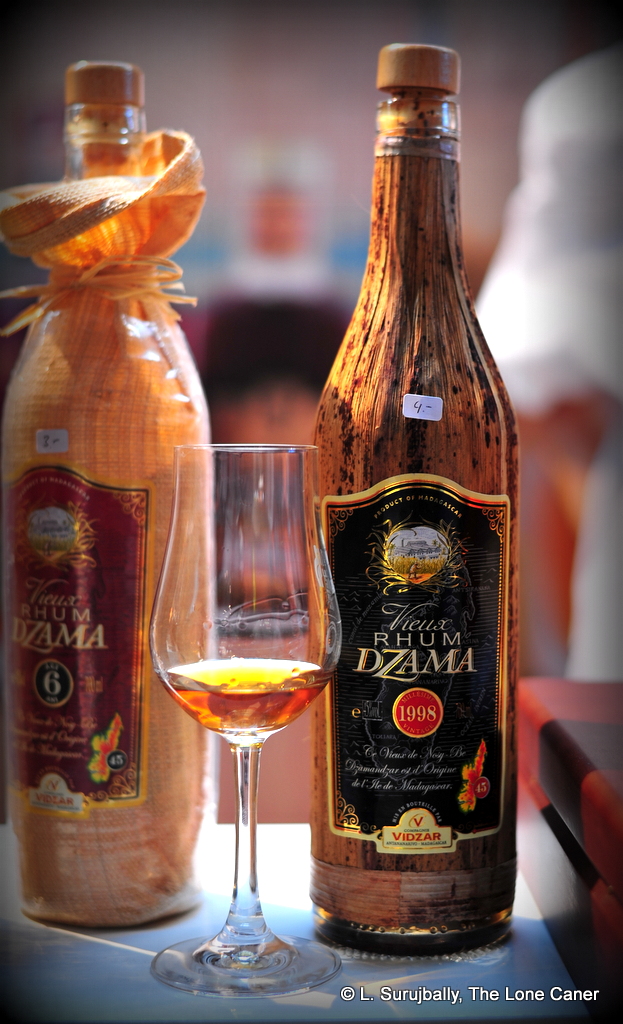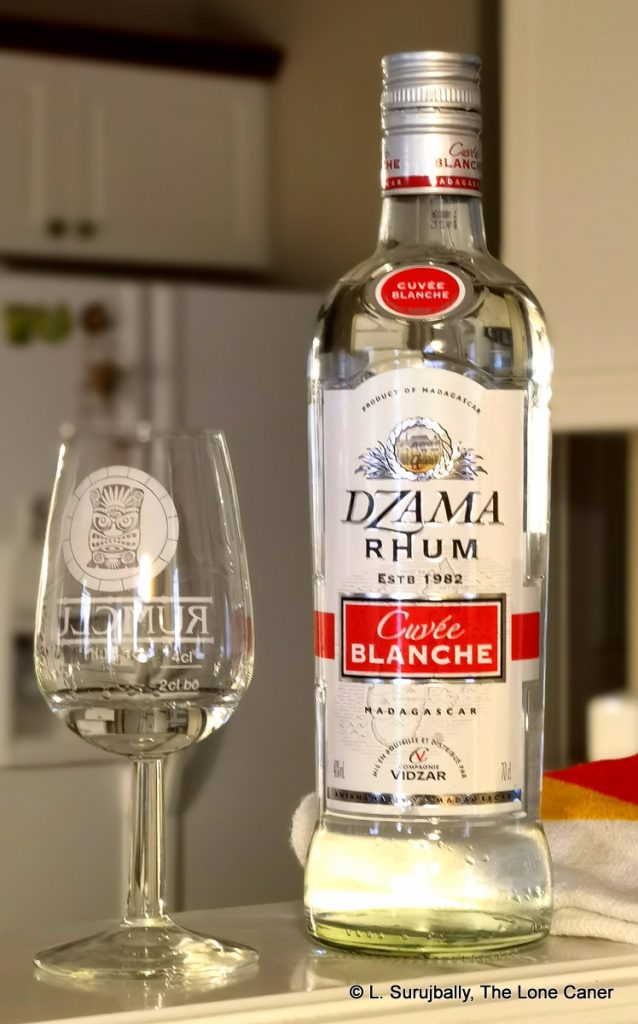 Madagascar’s best known distillery’s rums have been the subject of three reviews in these pages, stretching from 2014 to 2021, yet even now it is unclear whether this has made anyone sit up and pay attention. For the most part the rum drinkers’ attention remained resolutely with the Caribbean nations, or the new ones emerging elsewhere – suggesting that while Madagascar was unusual, it was apparently not enough to make it a global seller.
Madagascar’s best known distillery’s rums have been the subject of three reviews in these pages, stretching from 2014 to 2021, yet even now it is unclear whether this has made anyone sit up and pay attention. For the most part the rum drinkers’ attention remained resolutely with the Caribbean nations, or the new ones emerging elsewhere – suggesting that while Madagascar was unusual, it was apparently not enough to make it a global seller.
With or without such widespread recognition, Dzama still exists, however, still releases rums (a lot – Rum-X lists 29 of them), and can still be found on shelves, and even has a prestige 15 Year Old out there. So clearly it’s doing well. The rum being looked at today is their so called “classic” white (as opposed to the two other “prestige” editions), and irrespective of developments elsewhere in the blanc world is a very slightly aged rum – two to four weeks, apparently, with no further details on how this was achieved, or with what. The rum is also molasses based, column still distilled, released at 40%, and it ended up in Canada somehow, which is where I picked it up.
There’s little else of note here, so we can dive right in. Nose is peculiar: fragrant citrus soap starts things off, something reminiscent of Irish Spring; lots of vanilla, which is sort of a signature with Dzama (see biography below); citrus peel and sugar water make an appearance but the aroma lacks the herbals greenness that marks out an agricole rhum (which in any case this isn’t). I do like the distinct lemon meringue pie notes, which Mrs. Caner said reminded her of lemonade from Kyrgyz pears, which I mention because, y’know, I promised. These smells are not all that strong or distinct and can be best found in contradistinction to several other standard strength white blends (such as those I was trying that day).
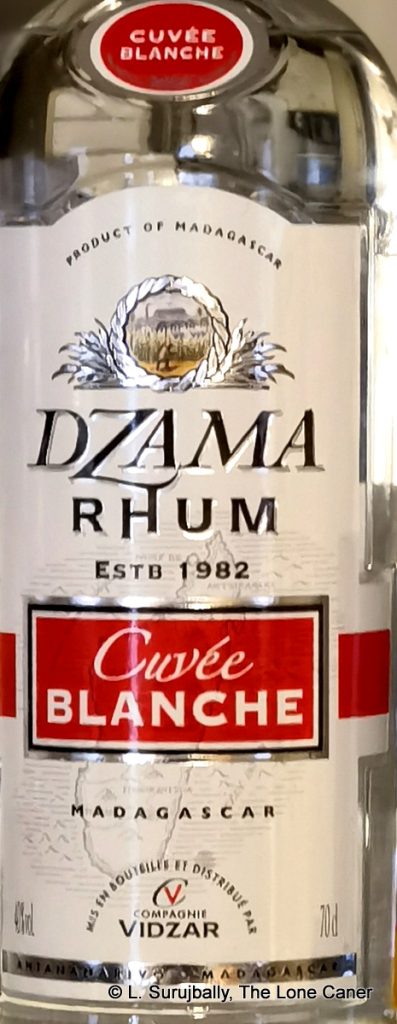 Taste wise, the lemony and custard notes are more pronounced (so is the soap). It has a decent body, warm, not too rough or sharp, and there are hints of unsweetened yoghurt, laban, milk and a pie crust fresh from the oven. A touch more licorice and ginger and maybe some cinnamon, leading to a quiet and undemonstrative finish which is too short, too faint … and frustratingly just starts to show off a few fruity notes when it all vanishes without so much as a goodbye.
Taste wise, the lemony and custard notes are more pronounced (so is the soap). It has a decent body, warm, not too rough or sharp, and there are hints of unsweetened yoghurt, laban, milk and a pie crust fresh from the oven. A touch more licorice and ginger and maybe some cinnamon, leading to a quiet and undemonstrative finish which is too short, too faint … and frustratingly just starts to show off a few fruity notes when it all vanishes without so much as a goodbye.
These comments might lead you to believe it’s something to walk away from, but not really: I’ve tasted worse of this kind. It’s different, reasonably tasty — kind of an alcoholic 7-Up, which I think is undone by the vanilla, that weird soap vibe, a bit too much sweet and too few real taste chops. Too, the general lack of cohesion of everything else makes for a disappointing sipping experience, and even for something so relatively unaggressive, it’s surprising how little rum comes through in the final analysis — it more resembles a doctored ethanol rather than some sort of well made local drink which has potential to represent its land of origin. That’s a pity, yet the potential of the brand remains, as it always has, which is why I keep coming back to their products: so who knows, one day they might make a white unaged rum I can really get behind. For now, this Cuvée Blanche is interesting for the geography, but not so much for the experience of drinking it.
(#982)(76/100) ⭐⭐⭐
Madagascar is that huge island off the south east coast of Africa; and the Dzama rums are made by Vidzar, formed in 1980 due to the efforts of Mr. Lucien Fohine, who noted that the small sugar factory on the tiny island of Nosy Be in the north produced a distillate that had distinctive flavours which persisted into the final distilled products…mostly low level rum for local consumption, to that point. He concluded it came from the ylang-ylang plant (also known as the macassar oil plant, or the perfume tree) whose roots intermingled with that of the cane.
[Now, the theory is that the oils and perfumes of the various botanicals to be found on Madagascar (vanilla, cloves, pepper are often cited) leach from their roots into the soil and are intermixed with the cane plants’ own root systems, into their stems, and thence to the ultimate distillate. I’m no chemist or botanist, but one could just as easily wonder why similar processes aren’t observed on the spice island (Grenada) for example, so I reserve judgement on that score. All the Dzama rums I’ve tried have that question lurking in the background anyway, as to whether something was added to or not. Dzama firmly maintains no synthetic or artificial additions, but this still leaves the door open for natural ones; and according to Rhum Attitude, the Cuvee Prestige white is apparently a kind of filtered infused rum here, so who is to say something similar isn’t happening here?]
But anyway, Mr. Fohine formed a company he called Vidzar (a contraction of Vieux Rhum de Dzamandzar), which initially concerned itself with whisky bottling. It was located close to the sugar cane fields of Nosy Be, near to a village called Dzamadzar, and a few years later, as their operations expanded, production was transferred to Antananarivo (the capital, in the centre of the island). The company, which now claims a majority of rum market share in Madagascar, makes a range of rums, including the Dzama Club, 3 YO and 6 YO, the Millésimé 1998 10 Year Old, Dzama 15 and 25 year old rums and a Cuvée Noire, as well as three blanche rums and a raft of infused and spiced versions. Most of these are untried by the vast majority of rum drinkers, and remain relatively unknown, though some have won prizes between 2010 and 2015, in Miami, Paris, Berlin and Madrid. It may just be a marketing thing, or the inability to get out there and run around the festival circuit.
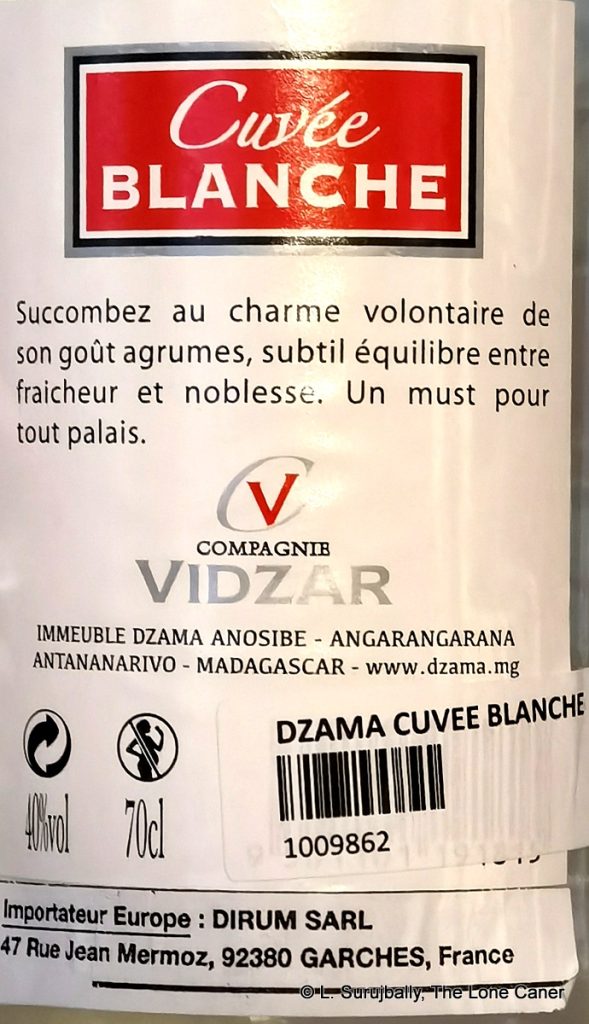
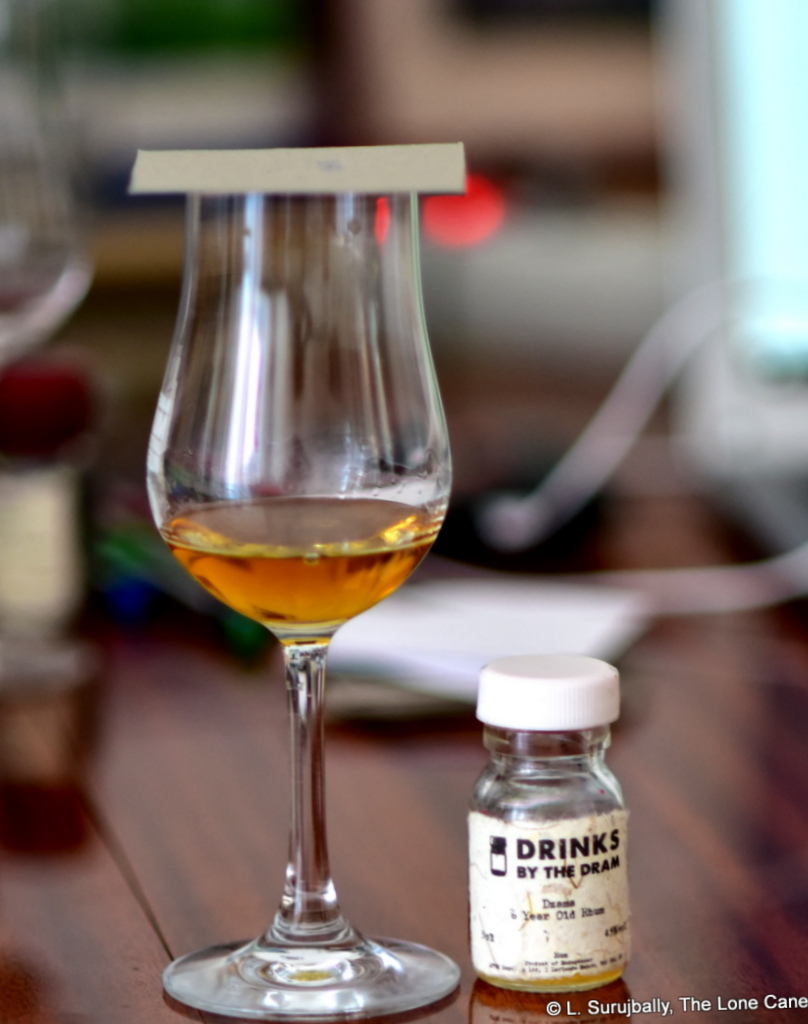
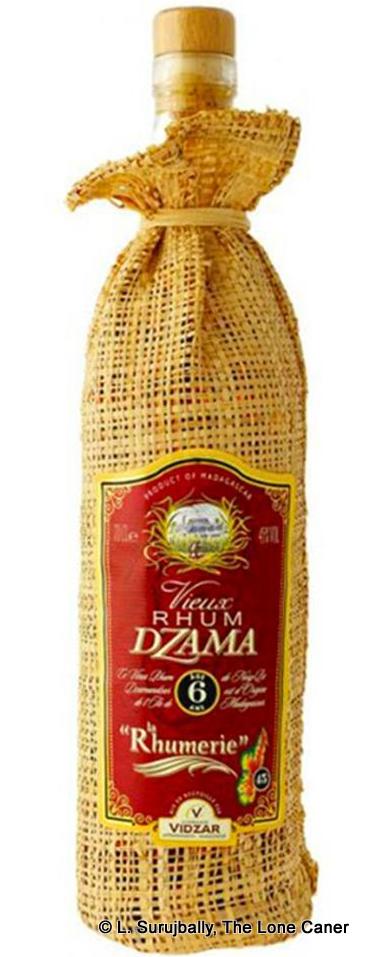 The palate was thick, rich and sweet, even in comparison the the 3YO which showed no modesty with such aspects itself but while stronger, had also been paradoxically easier. Here we were regaled with bananas, cherries in syrup, brown sugar, and a sort of smorgasbord of fruitiness – some tart, some just soft and mushy – and creaminess of greek yogurt sprinkled with cinnamon and cloves. Disappointingly, the finish did nothing much except lock the door and walk off, throwing a few notes of cloves, sugar, cherries, peaches and syrup behind. Not a stellar finish after the intriguing beginning.
The palate was thick, rich and sweet, even in comparison the the 3YO which showed no modesty with such aspects itself but while stronger, had also been paradoxically easier. Here we were regaled with bananas, cherries in syrup, brown sugar, and a sort of smorgasbord of fruitiness – some tart, some just soft and mushy – and creaminess of greek yogurt sprinkled with cinnamon and cloves. Disappointingly, the finish did nothing much except lock the door and walk off, throwing a few notes of cloves, sugar, cherries, peaches and syrup behind. Not a stellar finish after the intriguing beginning.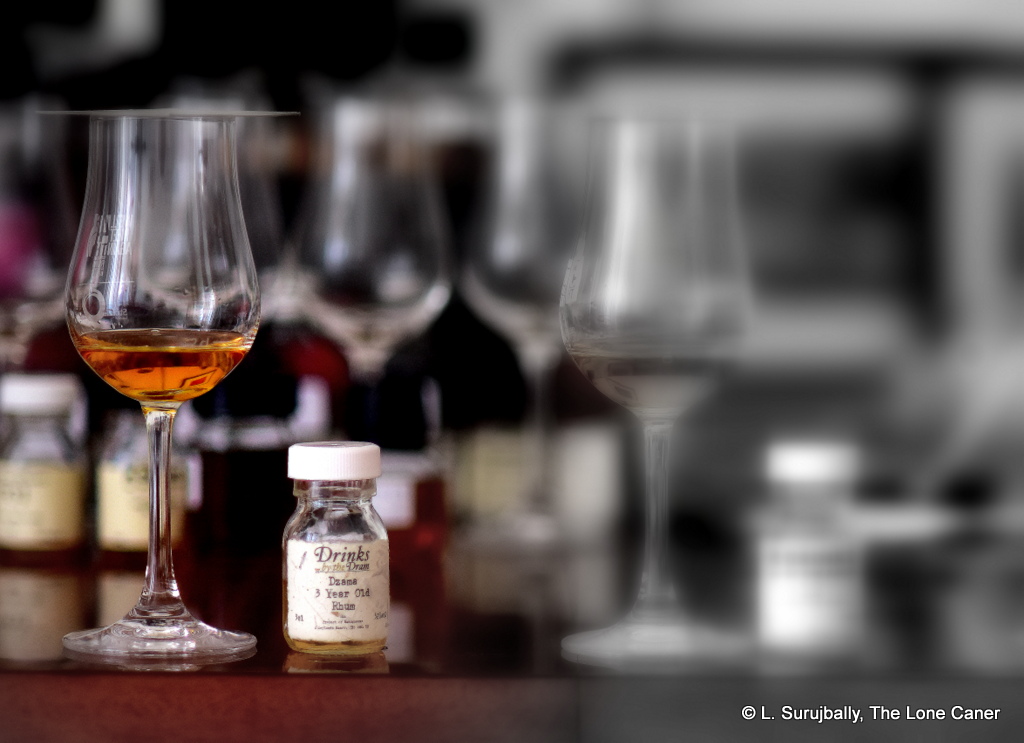
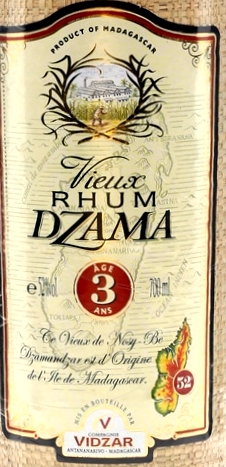 All that said, there isn’t much on the company website about the technical details regarding the 3 year old we’re looking at today. It’s a column still rum, unadded-to, aged in oak barrels, and my sample clocked in at 52%, which I think is an amazing strength for a rum so young – most producers tend to stick with the tried-and-true 40-43% (for tax and export purposes) when starting out, but not these guys.
All that said, there isn’t much on the company website about the technical details regarding the 3 year old we’re looking at today. It’s a column still rum, unadded-to, aged in oak barrels, and my sample clocked in at 52%, which I think is an amazing strength for a rum so young – most producers tend to stick with the tried-and-true 40-43% (for tax and export purposes) when starting out, but not these guys.